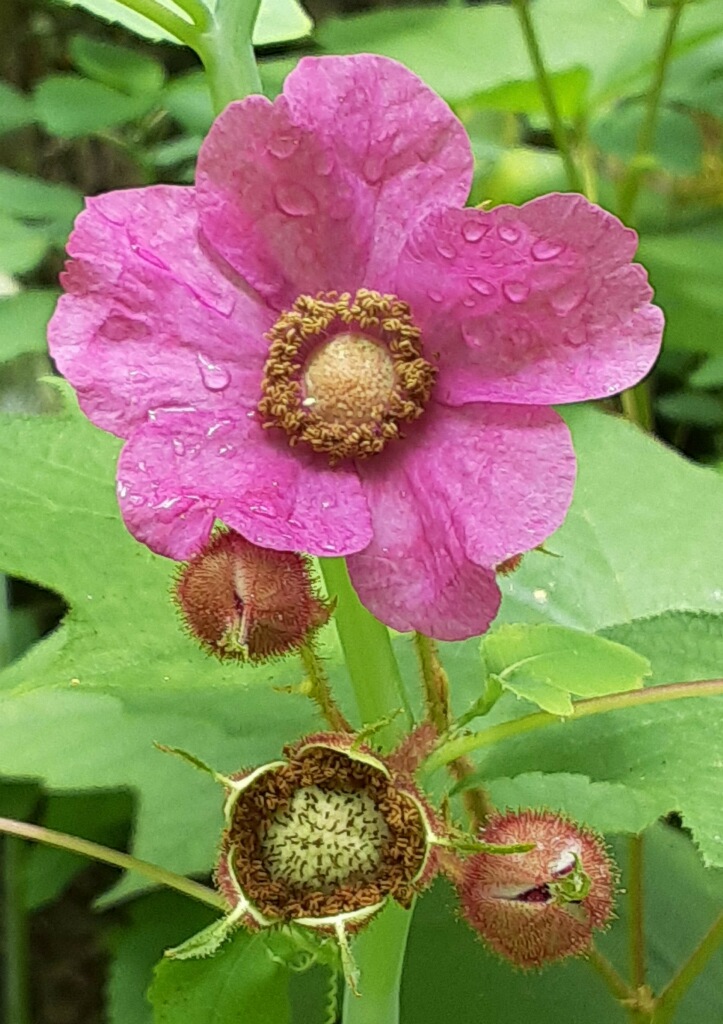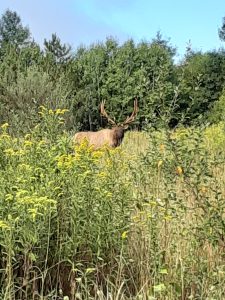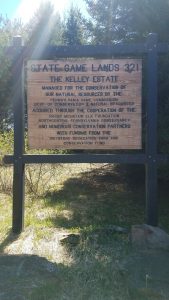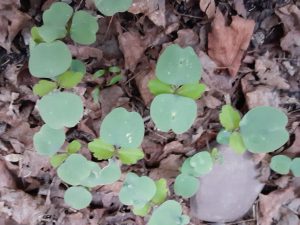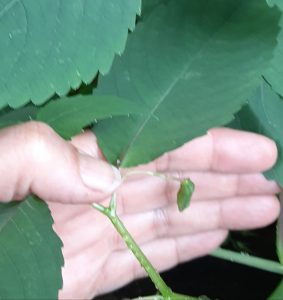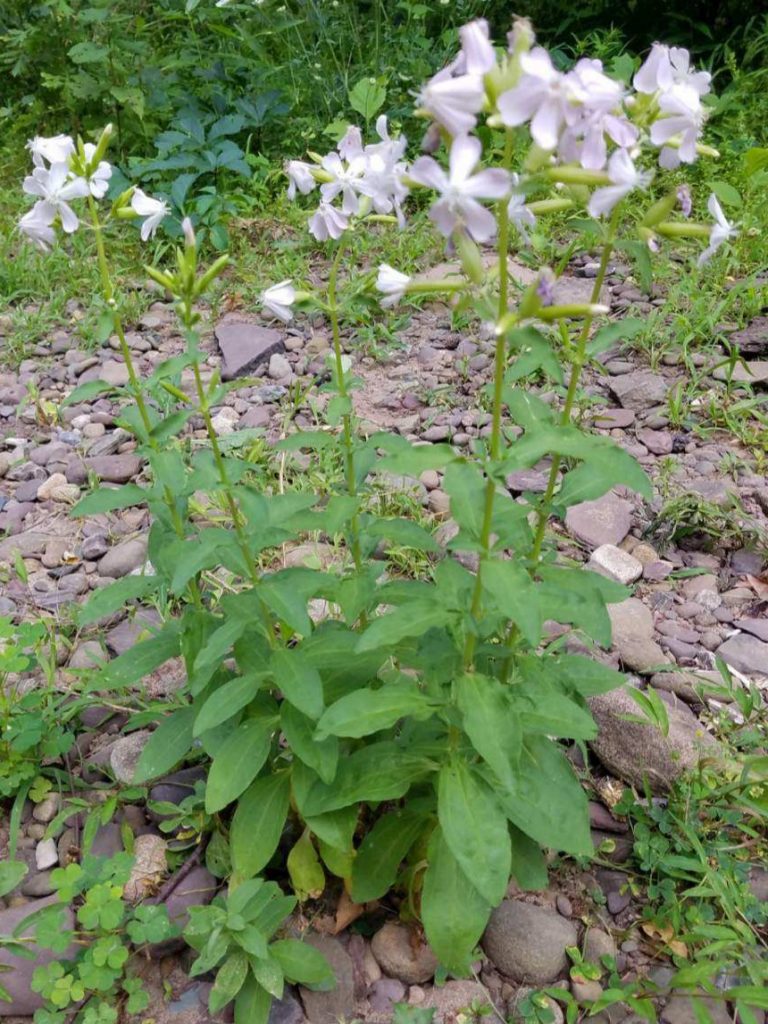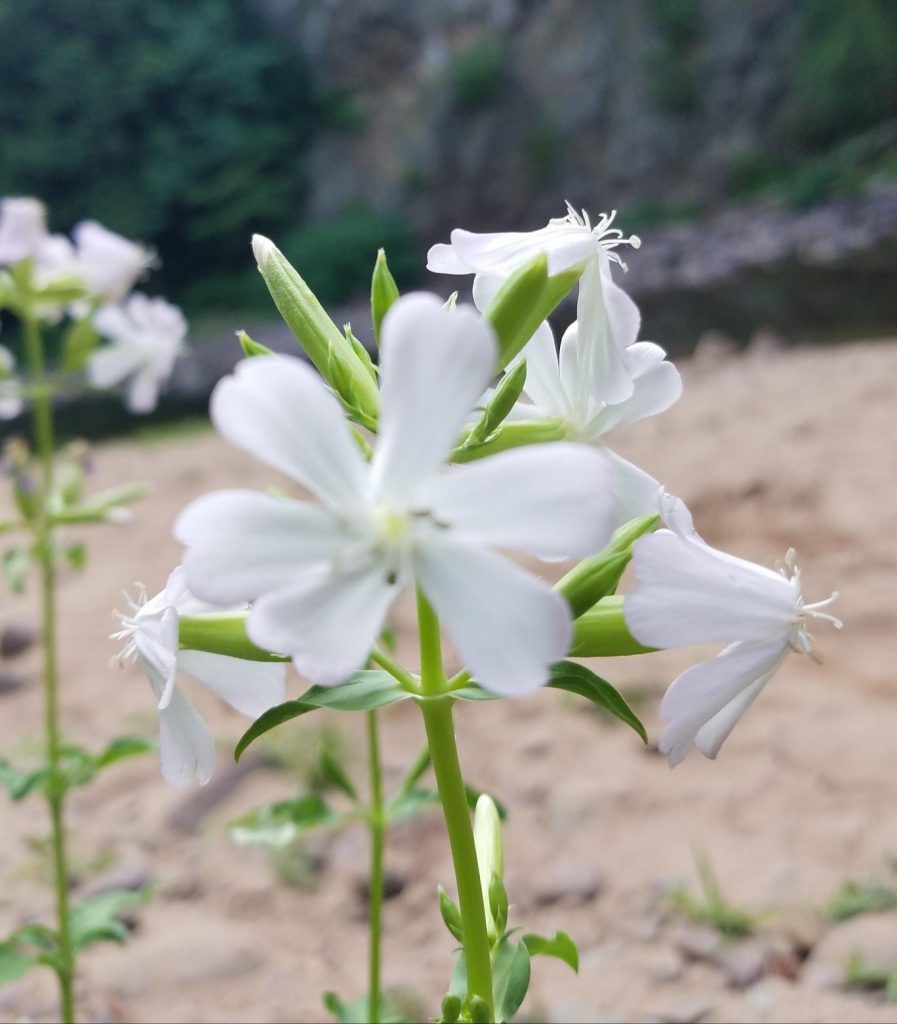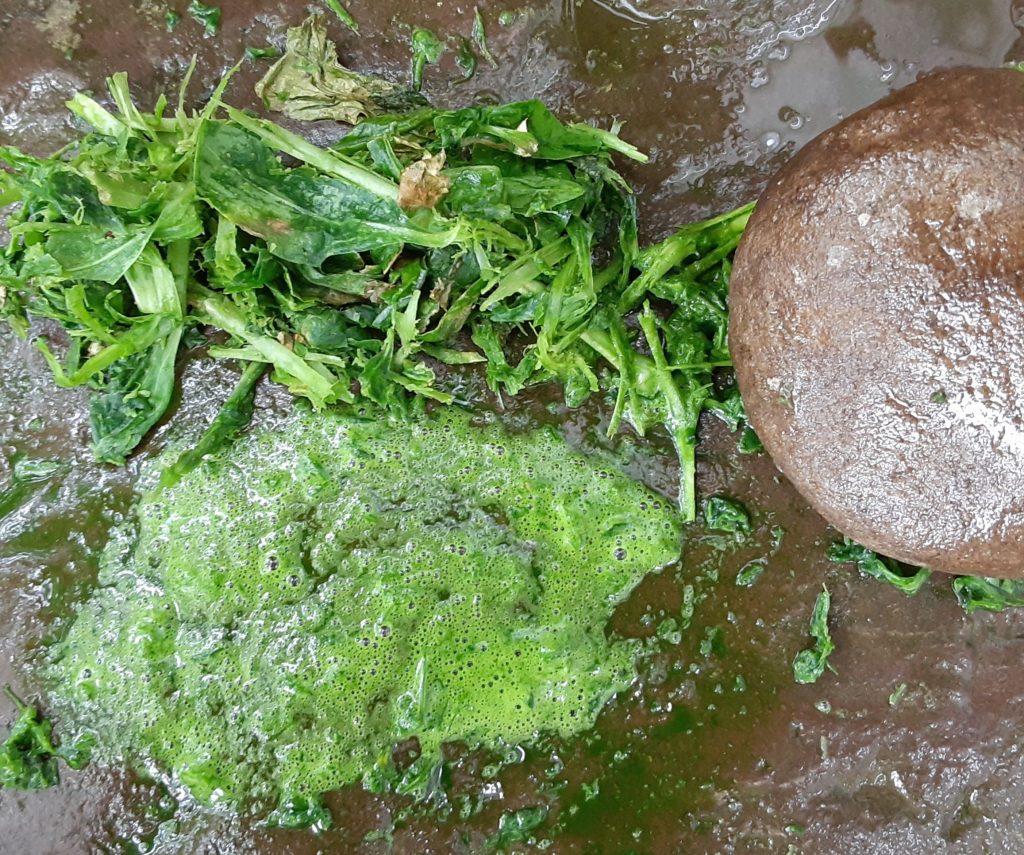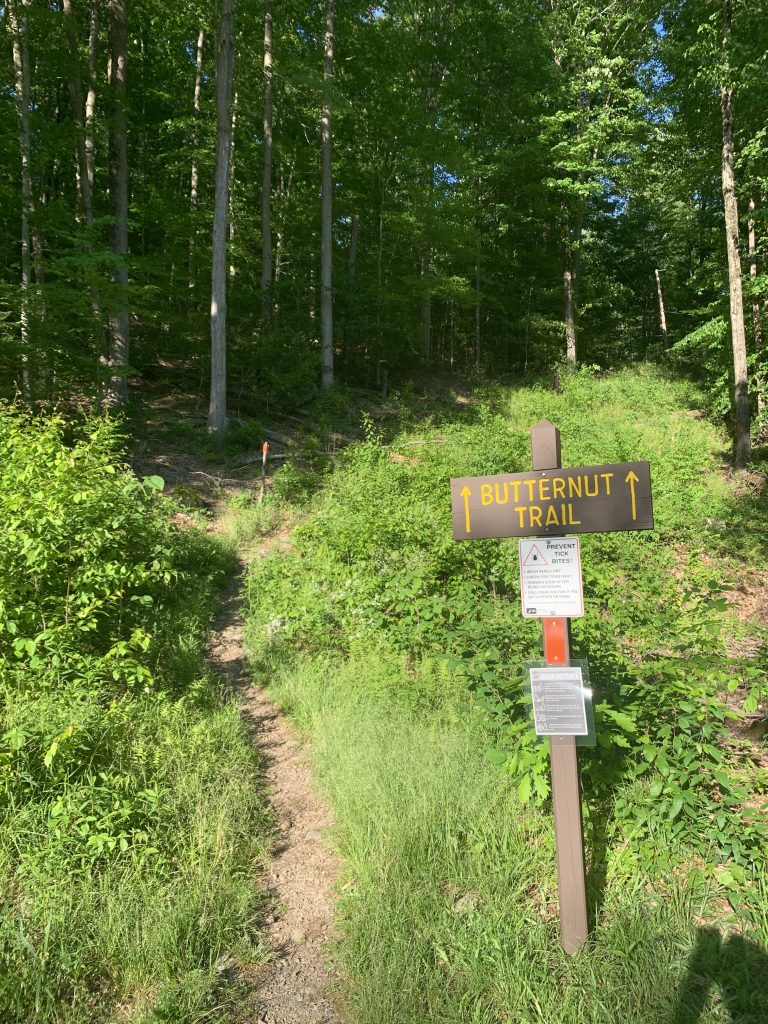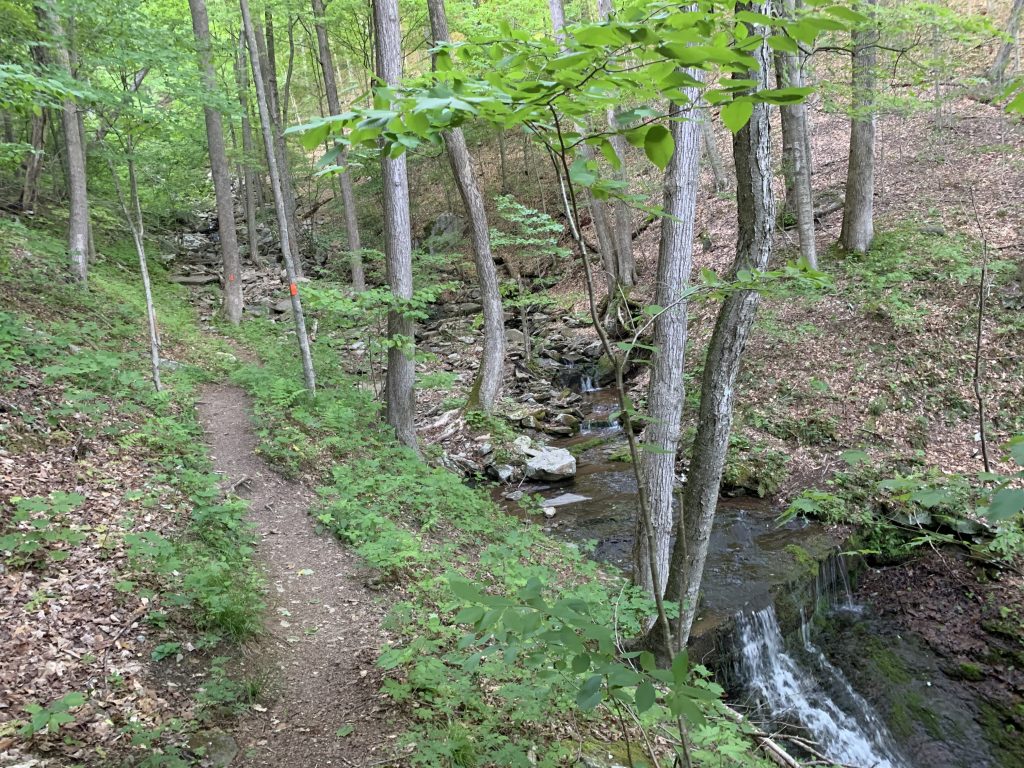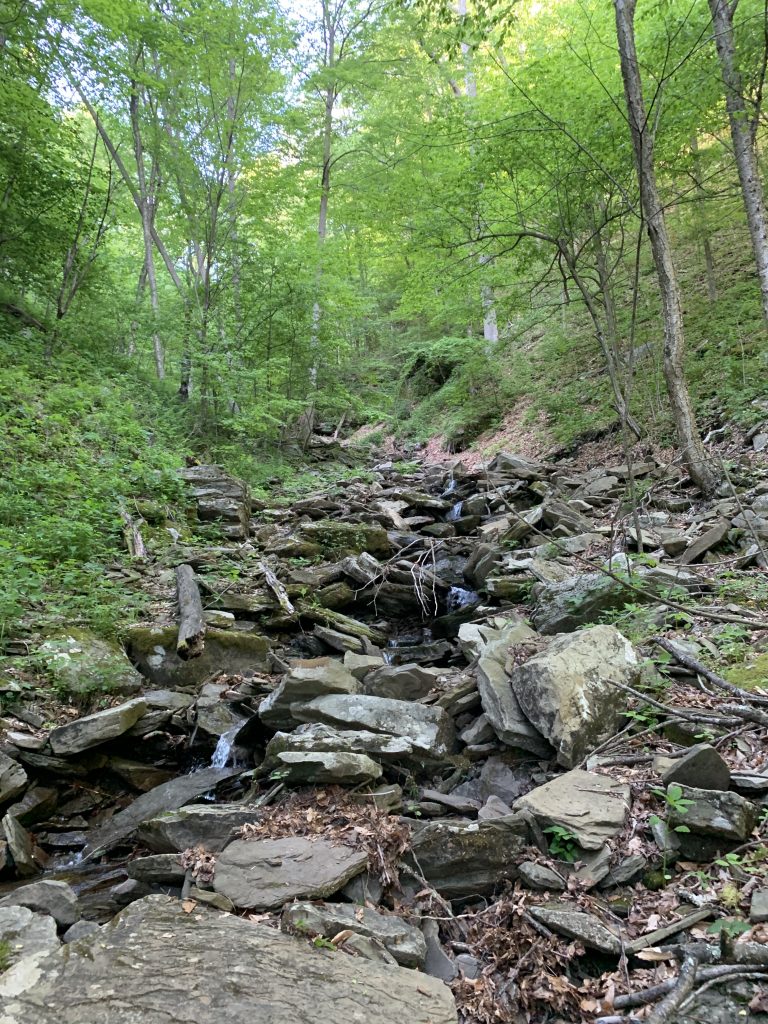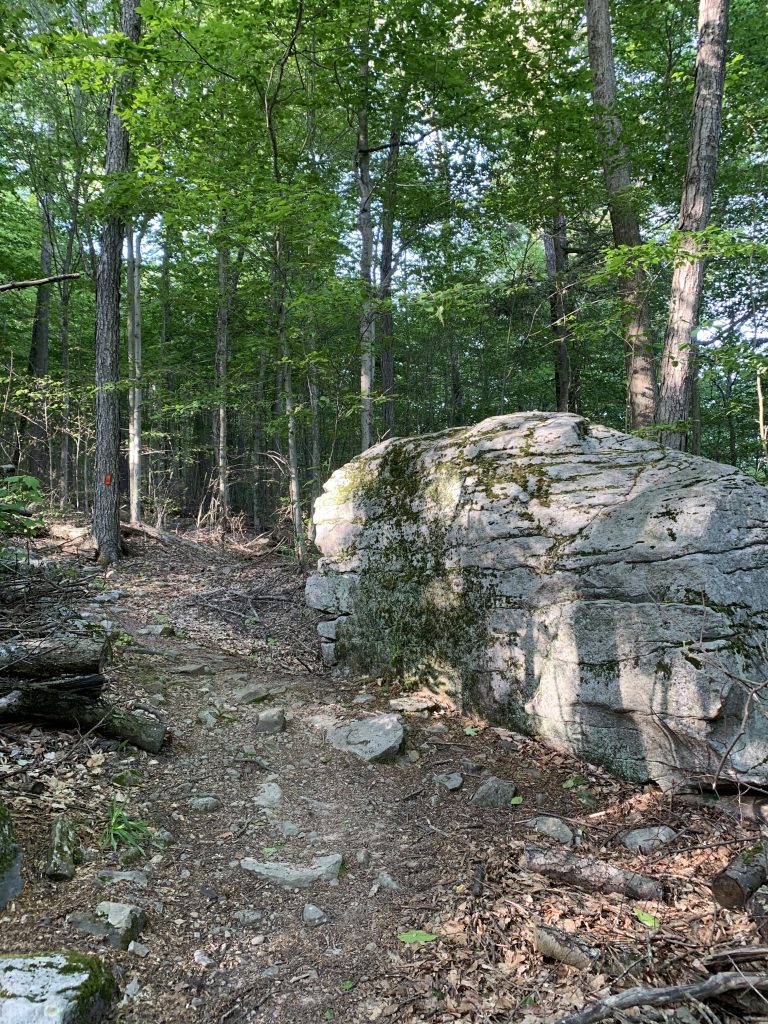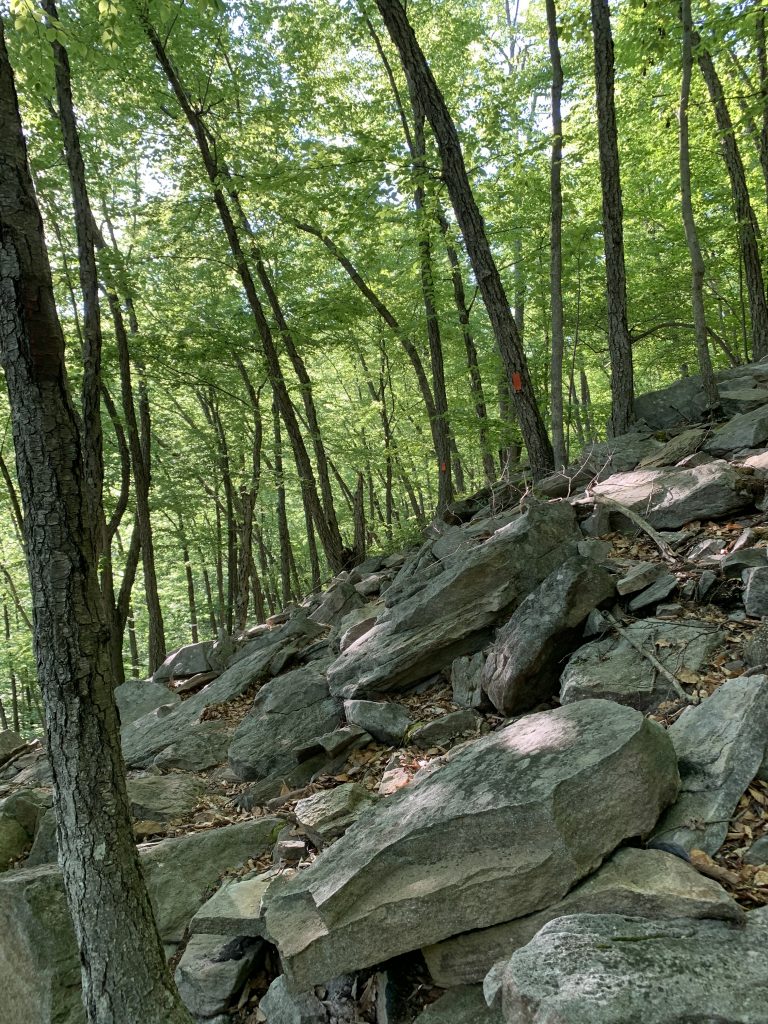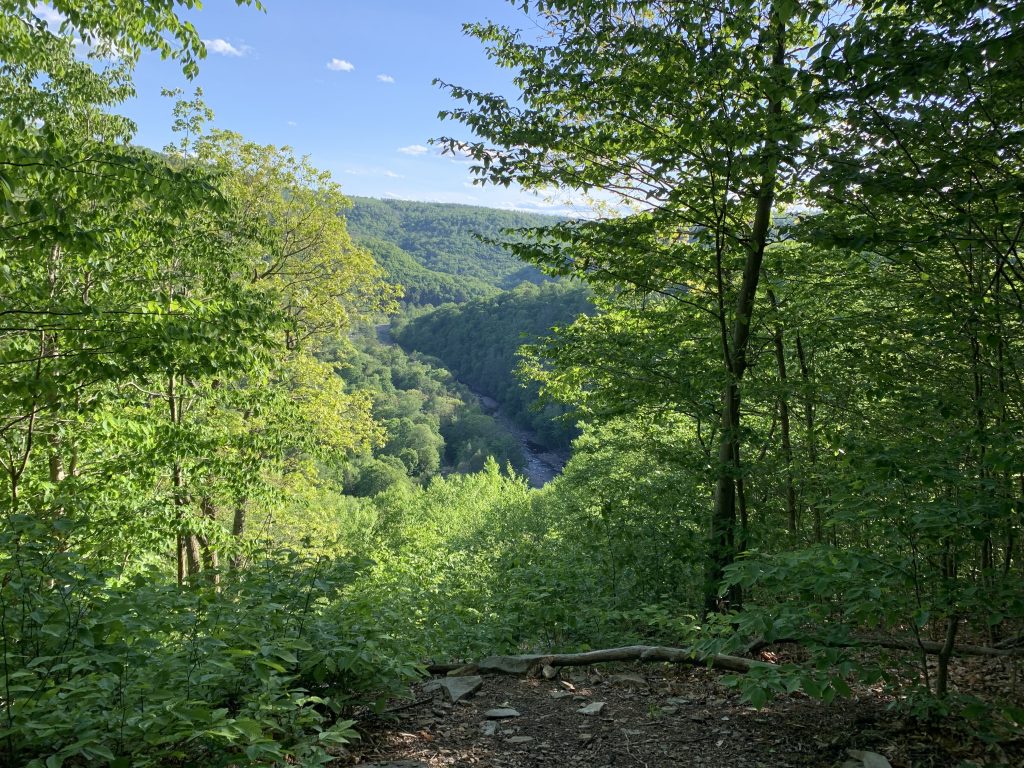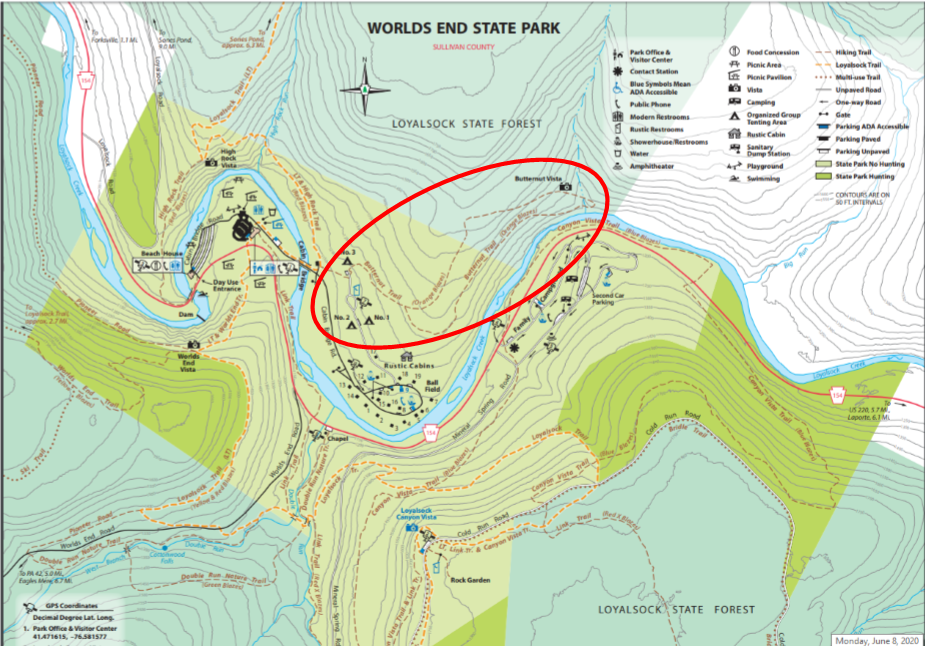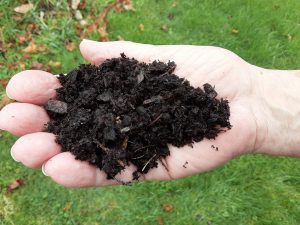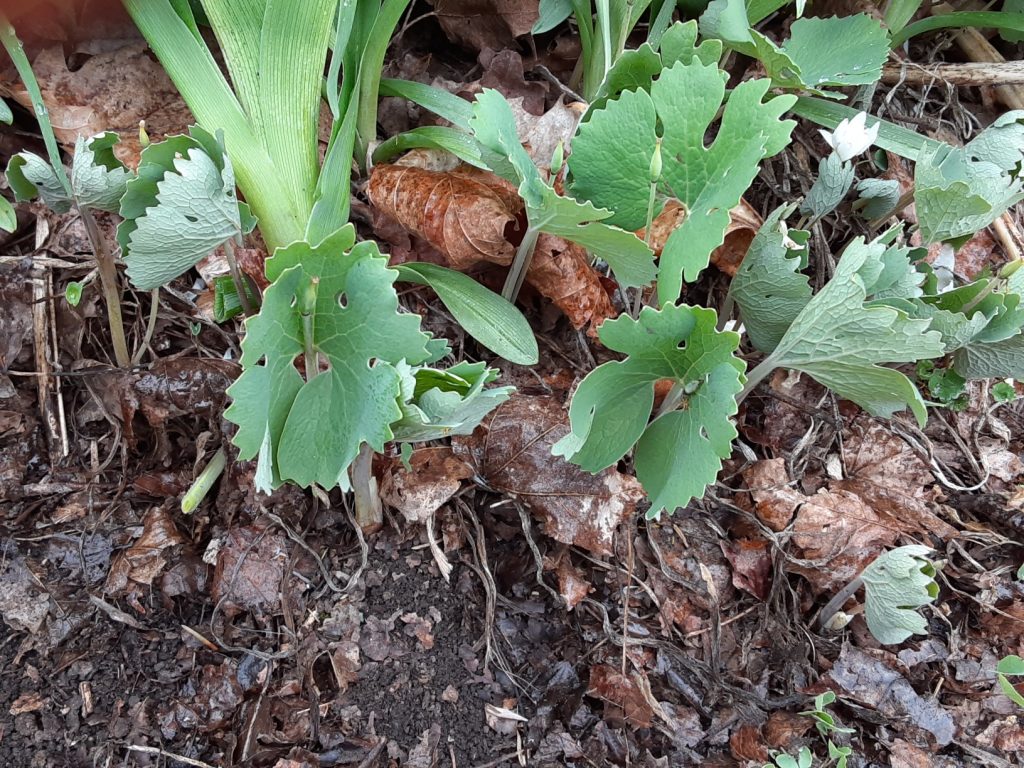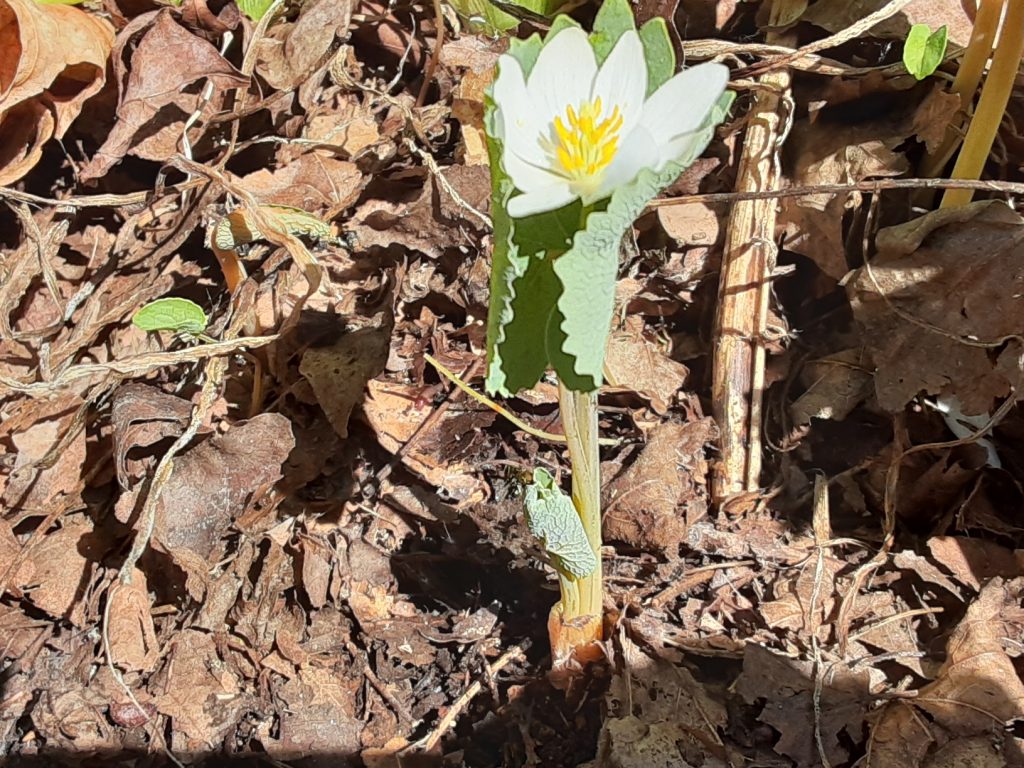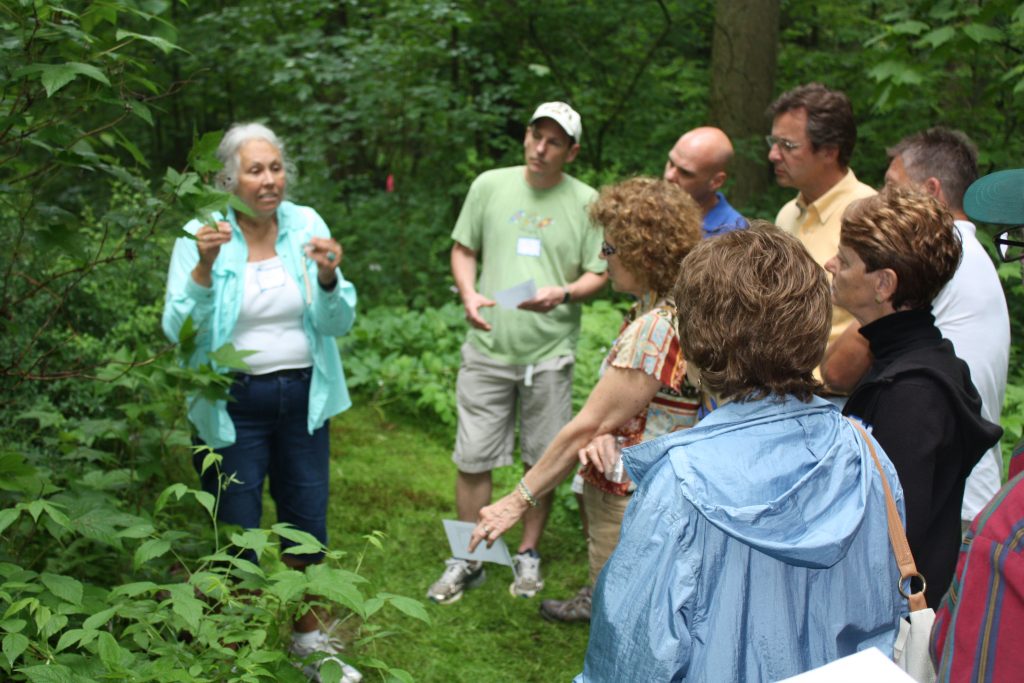By, Susan Sprout
Purple-flowering Raspberry’s scientific name is Rubus odoratus. Its genus name is from Latin for “bramble”, defined as a prickly, scrambling shrub or vine of the Rose Family. But, its arching and sprawling branches have reddish-brown hairs that are sticky to touch instead of prickly to touch! This perennial plant is native to eastern North America. Its gorgeous rose-purple flowers that are about two inches wide made it a desired target of plant gathers from England in the 1770’s. It was taken there as an ornamental and has since naturalized as many plants from there have done here!
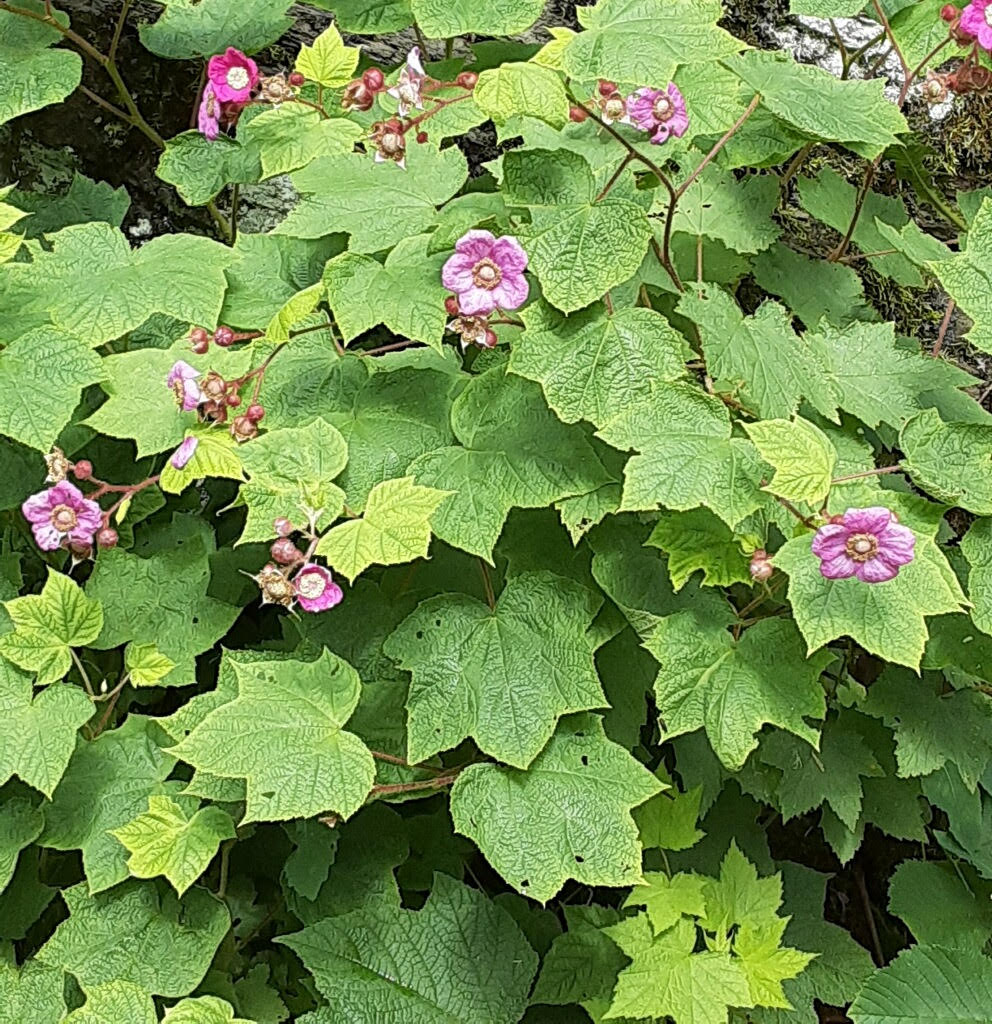
The leaves of this shrub resemble maple leaves with a heart-shaped base and three or five triangle lobes. The whole plant can reach to six feet tall. On a ledge or a shaded cliff where they seem to prefer growing, it is hard to get a true measure of their height. Their five-petaled flowers, pollinated by bees and insects, then create a large, flat berry made up of many little druplets. They bloom from May to August and set fruit from July to September depending on local conditions. I have found many adjectives describing the characteristics of these red berries: dry, tart, acid, bland, seedy, fuzzy to touch and on the tongue! Well, songbirds and game birds will eat them. Small mammals, too. The seeds are great for sowing in order to return native plants to an area and the roots work well at stabilizing banks. Many members of the Rubus genus, eighteen grow PA, have been used medicinally because their leaves are highly astringent and helped treat dysentery and diarrhea as well as skin ailments like sores and boils.
